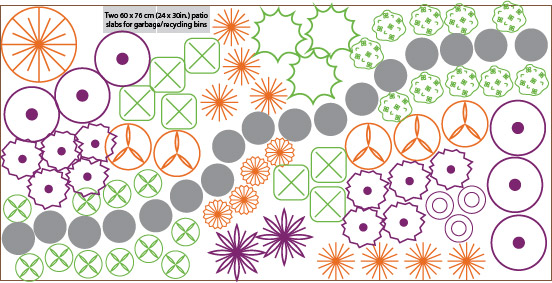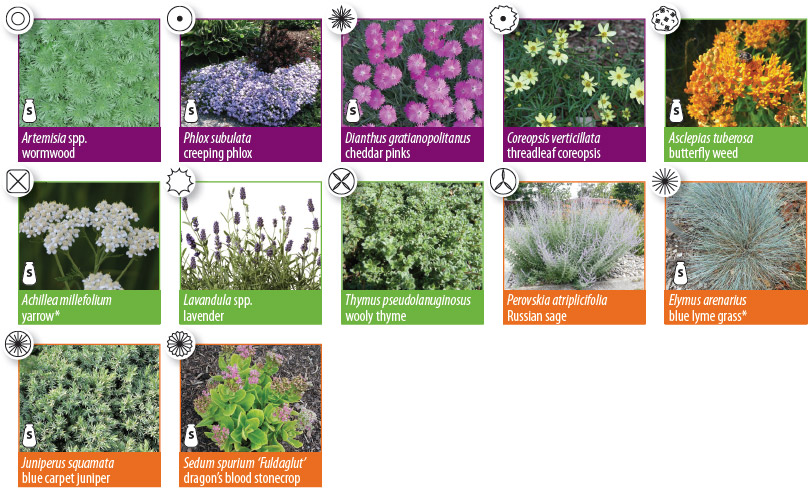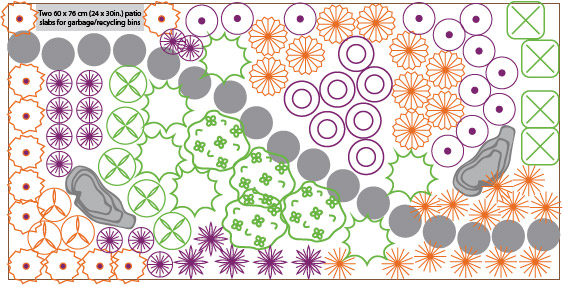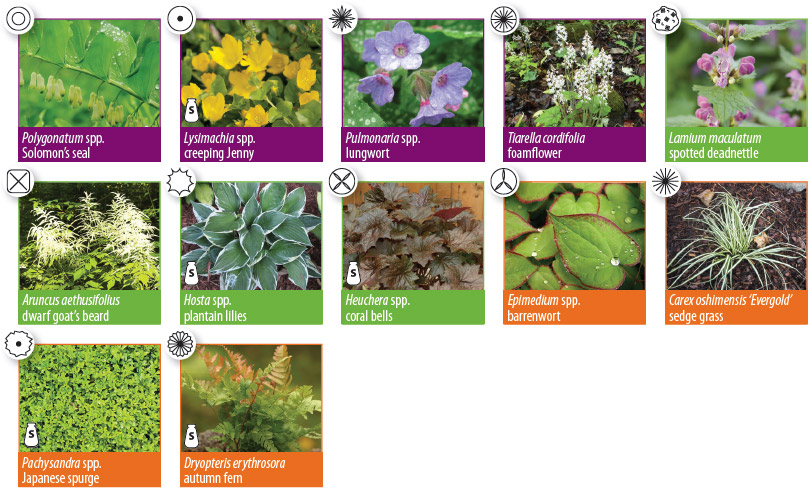On this page
Call before you dig
Please visit ontarioonecall.ca or call 1-800-400-2255 to locate underground utilities before you start digging. There are usually water, electricity, natural gas and utility pipes under the sidewalk and boulevard in front of your house.
Planting on City property
You are welcome to plant a boulevard garden using plants that don’t interfere with the road, sidewalk, sightlines, snow removal or other City maintenance and in accordance with all applicable City By-laws and Policies.
- The soil, mulch, stones or pavers must be lower than the sidewalk.
- Large rocks, structures, raised beds or containers are not permitted.
- Keep area as flat as possible, about 2.5 centimetres (1 inch) below sidewalk; make a 2.5 centimetre depression in the centre to help catch rainwater, and prevent erosion and runoff
- Plants must be no taller than 0.8 metres (2.5 feet)
- Keep taller plants toward the centre of the garden, and stake them if they droop
- Choose hardy plants that can handle tough growing conditions—the boulevard is no place for rare, expensive or exotic plants.
- Leave space for people to get out of parked cars.
- Leave space for your waste carts—two 60 by 75 centimetre patio stones work well.
Please note that if you choose to plant on City-owned property, this does not diminish the rights of the City or any public utility company (including any authorized contractors) to enter upon the City-owned property for the purpose constructing, repairing, maintaining, servicing, upgrading, or replacing any underground or above ground services, installations, or appurtenances. The City or the public utility company which enters on to City-owned property to exercise these rights is not liable for any damages or compensation related to plantings or otherwise on City-owned property whatsoever.
Measure the diameter of the tree trunk at 1.4 metres (4.5 feet) above the ground. Multiply this number by 0.5 metres (1.5 feet) and plant at least that far away from the trunk to avoid damaging the roots.
Layer up to 10 centimetres (4 inches) of mulch, compost or soil above tree roots. Keep mulch away from the trunk to prevent rot; 8 to 12 centimetres (3 to 5 inches) away from young trees, and 20 to 25 centimetres (8 to 10 inches) away from mature trees.
Do not nail or tie signs, trellises or other fixtures to any tree.
Boulevard gardening
- Add 5 centimetres (2 inches) of organic material (e.g. manure, compost, leaf mold) every two years to create a rich, nutritious soil, and remove the need to fertilize.
- For the first few weeks, keep the top 2.5 centimetres (1 inch) of soil moist. After that, water once a week until plants are established (one to two seasons).
- Adding 5 to 10 centimetres (2 to 4 inches) of mulch every few years to reduce watering needs, prevent weeds and increase plant survival and growth.
- Keep the final mulched surface 3.5 centimetres (1 inch) below the curb or sidewalk to prevent erosion and runoff.
Boulevard garden design—full sun
- At least six hours of direct sunlight.
- Well–drained soil that doesn’t dry out.


Boulevard plants full sun
Spring interest
- Artemisia species, wormwood (salt tolerant)
- Coreopsis verticillata, threadleaf coreopsis
- Dianthus gratianopolitanus, cheddar pinks (salt tolerant)
- Phlox subulata, creeping phlox (salt tolerant)
Summer interest
- Achillea millefolium, yarrow (salt tolerant, spreads quickly)
- Asclepias tuberosa, butterfly weed (salt tolerant)
- Lavandula species, lavender
- Thymus pseudolanuginosus, wooly thyme
Fall interest
- Elymus arenarius, blue lyme grass (salt tolerant, spreads quickly)
- Juniperus squamata, blue carpet juniper (salt tolerant)
- Perovskia atriplicifolia, Russian sage
- Sedum spurium ‘Fuldaglut’, dragon’s blood stonecrop (salt tolerant)
Printer-friendly: sun – boulevard garden
Boulevard garden design—shade
- Less than three hours of direct sunlight each day, filtered sunlight the rest of the day.
- Rich, well-drained, soil.


Boulevard plants shade
Spring interest
- Lysimachia species, creeping Jenny
- Polygonatum species, Solomon’s seal
- Pulmonaria species, lungwort
- Tiarella cordifolia, foam flower
Summer interest
- Aruncus aethusifolius, dwarf goat’s beard
- Lamium maculatum, spotted deadnettle
- Heuchera species, coral bells
- Hosta species, plantain lilies
Fall interest
- Carex oshimensis ‘Evergold’, sedge grass
- Dryopteris erythrosora, autumn fern
- Epimedium species, barrenwort
- Pachysandra species, Japanese spurge
